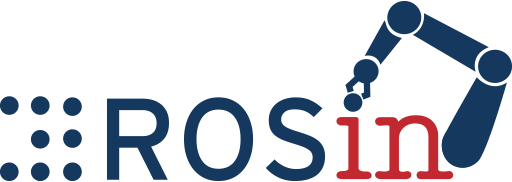This repository has been split and restructured into individual packages to facilitate upstream merges into ROS mainline repositories. The development has been moved to the following places:
- Message definition for Cartesian trajectories: cartesian_control_msgs
- Interface definitions and controllers: ros_controllers_cartesian
- Speed scaling interface: scaled_controllers
- Trajectory forwarding: pass_through_controllers
Please continue to file bugs and open pull requests there as usual.
This package brings mechanisms for Cartesian control to the ROS-control framework.
New functionality (colored):
As opposed to joint-based control, Cartesian control is often more intuitive for programmers to specify how a tool (robot end-effector) should move in their application. For instance, gluing, grinding, polishing and all sorts of other surface-related tasks benefit from a straight-forward task formulation with Cartesian coordinates.
It comes at a surprise that there hasn't been native support of Cartesian control in ROS. Yet, the number of OEMs, whose drivers support Cartesian control interfaces is growing. This set of packages aims at filling this gap and get you started with Cartesian control.
-
Add Cartesian functionality to ROS control. This brings new interfaces for controller design, such as a
PoseCommandInterface, aTwistCommandInterface, and a new Cartesian trajectory definition. Example controllers include aTwistControllerand aCartesianTrajectoryController. -
Enable Cartesian trajectory control in your applications. Specify your task comfortably with waypoints in task space. ROS-side interpolation and streaming of setpoints over the new interfaces is only one of several alternatives.
-
Use (conventional) ROS control for Cartesian trajectory execution. You don't need to change anything in the driver's HW-abstraction of your specific robot if that supports current ROS control.
-
Hand-over control to the robot by forwarding trajectories. Two new interfaces
CartesianTrajectoryInterfaceandJointTrajectoryInterfacelet robots take care of driver-side interpolation to achieve best performance. -
Speed-scale trajectory execution. All trajectory executions (both Cartesian and joint-based) can be speed-scaled within 0 to 100% at runtime. This gives you flexibility in setting-up new applications and during test runs. Changing this continuously even lets you reshape trajectory execution without re-teaching.
In the spirit of ROS control, the implementation is robot-agnostic and shall support applications on a wide range of robots. The table below shows what features will be available with this enhancement.
| Feature | Robots with new interfaces | Robots with current ROS control |
|---|---|---|
| Cartesian trajectory control | ✓ | ✓ |
| Cartesian trajectory forwarding | ✓ | |
| Joint trajectory forwarding | ✓ | |
| Speed-scale trajectories | ✓ |
Developed in collaboration between:

Supported by ROSIN - ROS-Industrial Quality-Assured Robot Software Components.
More information: rosin-project.eu
This project has received funding from the European Union’s Horizon 2020
research and innovation programme under grant agreement no. 732287.


